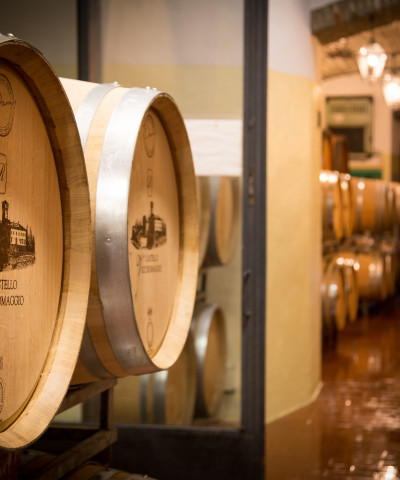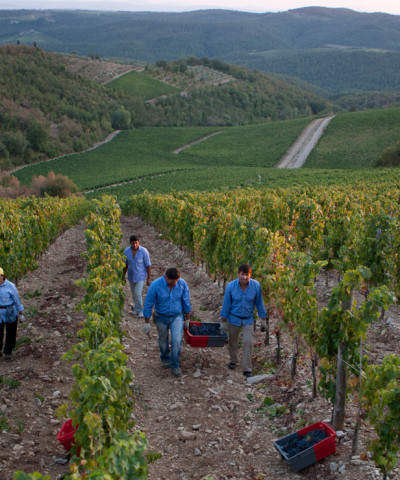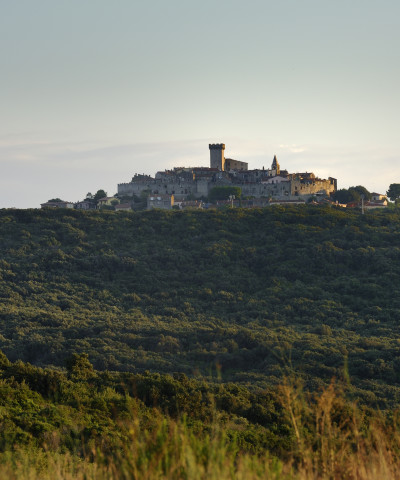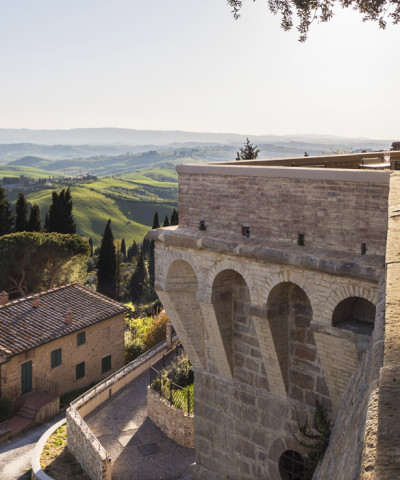Guide to the Tuscan Maremma: what to do and what to visit
Discovering an area and its crystal clear sea, medieval villages, rolling hills, mountains overlooking the sea and rows of vineyards
The Tuscan Maremma is an unmissable destination for lovers of beauty and good food, offering breathtaking scenery ranging from picturesque villages and unspoilt coastlines to hills dotted with forests and vineyards, famous for the production of high quality wines. This wild and fascinating land embodies a perfect marriage between the sea and the countryside, offering a unique sensory experience, rich in scents, flavours and colours.
A land masterfully recounted in the book commissioned by the Consorzio Tutela Vini della Maremma Toscana and published by Gruppo Editoriale: MAREMMA TOSCANA – A journey through people, places and tastes with texts by journalist and food and wine critic Aldo Fiordelli and unpublished photographs by photographer Dario Garofalo.
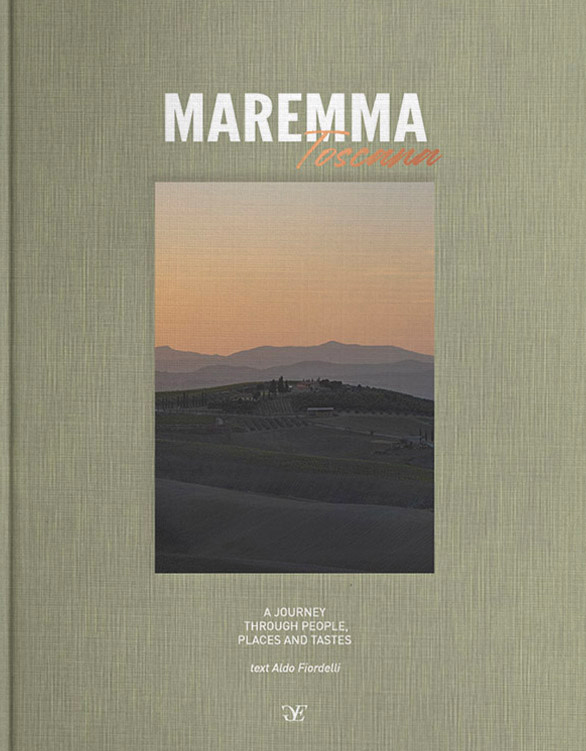 Libro Maremma Toscana
Libro Maremma ToscanaLet's discover together the various areas of the Tuscan Maremma and all the places not to be missed.
HERE you will find all the villages not to be missed, HERE the most beautiful beaches, HERE the restaurants where to eat in the villages and HERE those where to eat by the sea!
COLLINE METALLIFERE
Massa Marittima, Roccastrada, Montieri
Massa Marittima, one of the largest and most developed historical towns, not surprisingly with major Sienese influences, is the gateway to the Maremma. Here, not to be missed are the Cathedral of San Cerbone, the Duomo of Massa Marittima, which dominates the square from the top of an imposing oblique staircase, and the Castle of Montereggio. Between Roccastrada and Massa Marittima is the village of Montemassi, culminating in the imposing ruins of a large fortification built shortly after the year 1000 at the behest of the Aldobrandeschi family. The village of Roccastrada stands on a high massif of trachyte, a volcanic rock typical of the area. One of the symbols of Roccastrada is the clock tower. Choose a windy day to visit the Garden of Sounds by Paul Fuchs, the Bavarian artist who chose the Boccheggiano countryside as his home, dotting his garden with threadlike works in copper, iron, steel and bronze that resonate when caressed by the breeze. Finally, do not miss Le Roste, between Montieri and Boccheggiano, reminiscent of a small grand canyon.
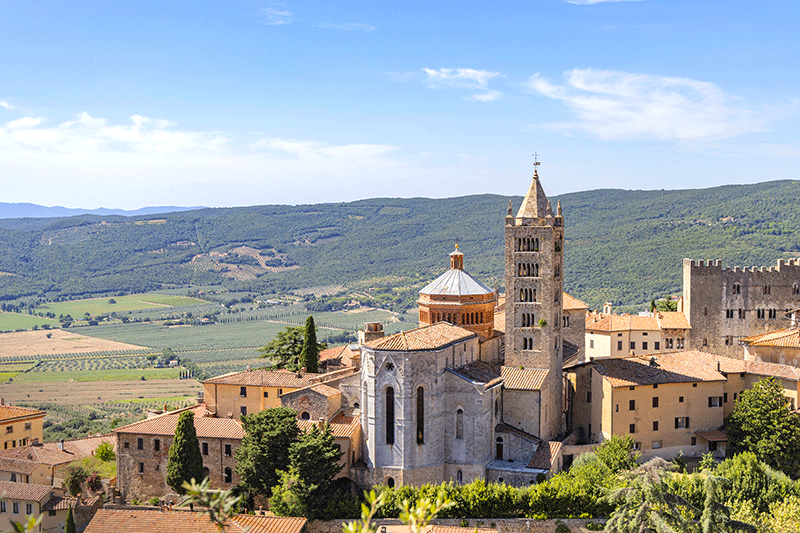 Massa Marittima
Massa MarittimaCastiglione della Pescaia
What strikes you at first glance about this beautiful village overlooking the sea is undoubtedly its majestic castle and the imposing Aragonese walls that surround its oldest core. Also worth seeing is the Casa Rossa Ximenes Museum. Only a few steps are needed to enjoy the beautiful sea. The most famous beaches in the area are: le Rocchette (in the direction of Punta Ala), where you can choose between the expanse of golden sand and the cliff dominated by the manor from which it takes its name, and le Marze (in the direction of Marina di Grosseto), with its beautiful coastline of about 6 km and its shady pine forest. Those who love characteristic medieval villages perched on the hills should visit Tirli, also famous for its breathtaking views, and Buriano, an ancient feud of the Aldobrandeschi counts. For fans of Etruscan archaeology, a must-see is Vetulonia, guardian of one of the largest necropolises ever found.
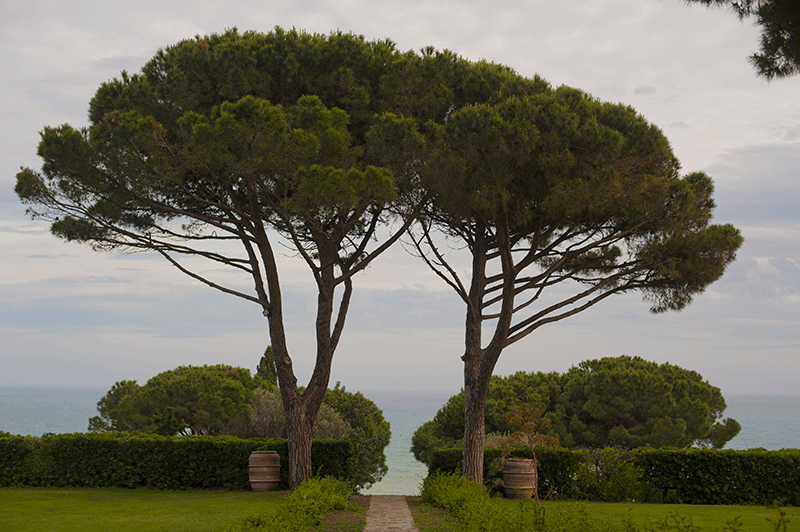 Castiglione della Pescaia
Castiglione della PescaiaFollonica, Scarlino, Gavorrano
Between the end of the 19th century and 1981, Gavorrano was one of the most important pyrite mining centres in Europe. Parts of the mines are now a fascinating museum. Also not to be missed are the Castel di Pietra and the Teatro delle Rocce. Moving towards Scarlino we find the Rocca Aldobrandesca, better known as Rocca Pisana or Castello di Scarlino, towering over the village. Descending towards the sea, we find Cala Violina, one of the most famous beaches in the Maremma, enclosed by Mediterranean scrub and a crystal-clear sea. It can be reached on foot along a shady path about 20 minutes from the car park, or by sea. In Follonica, inside the village of the former Ilva Foundries, we find MAGMA, which houses an interesting museum with a rich multimedia and multi-sensory itinerary to discover the artistic face of the iron and steel industry and the world of mining and smelting.
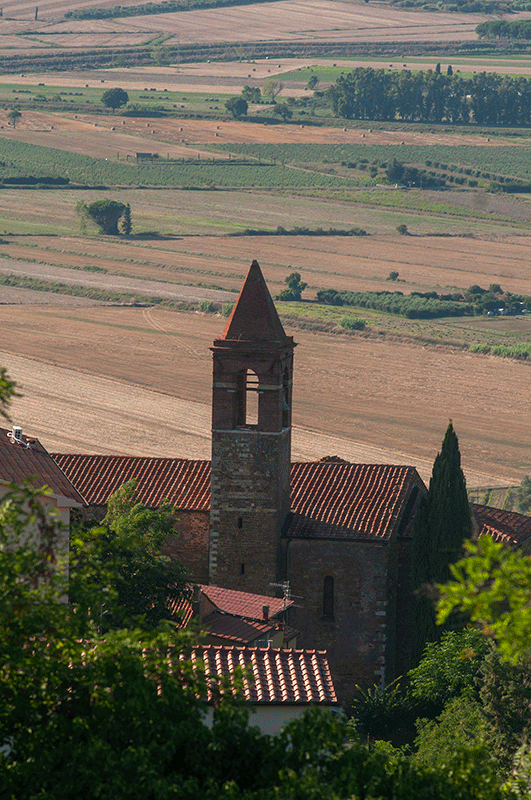 Scarlino
ScarlinoCOLLINE DI MAREMMA
Grosseto, Campagnatico, Roselle
At 10 metres above sea level, Grosseto dominates the Maremma plain while being surrounded by water. Worth seeing are the Duomo, the Pozzo della Bufala and the hexagonal walls protecting the city. Three kilometres long and almost perfectly preserved (with its six bastions, two gates and the imposing Cassero Senese), it is a pleasant walk. And if you are keen on archaeology, you must visit the Maremma Museum of Archaeology and Art (MAAM), which exhibits hundreds of elaborate artefacts from some of the most important Etruscan settlements in Tuscany. Not far from Grosseto, in the most unspoilt Maremma, is Campagnatico, a small town that still smells of the Middle Ages and traditions. Finally, about 10 km north of Grosseto, along the state road leading from the Maremma capital to Siena, we find the Roselle Archaeological Area.
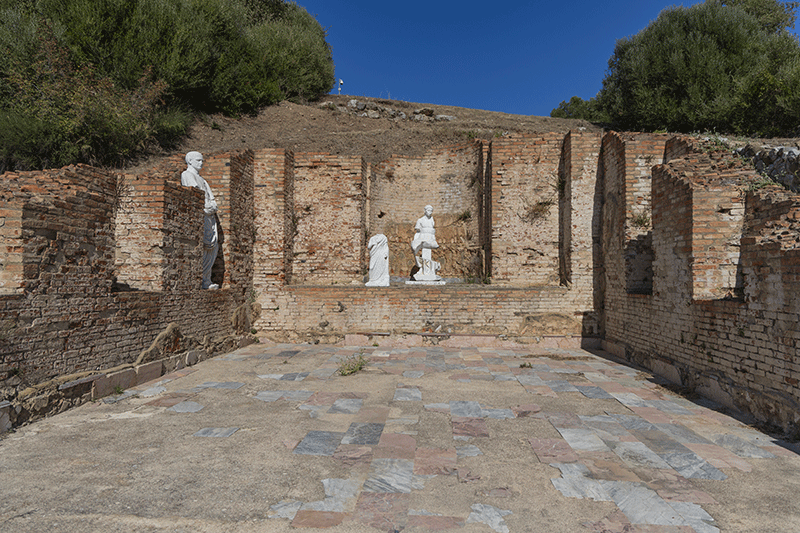 Area Archeologica di Roselle
Area Archeologica di RoselleMarina di Grosseto, Principina a Mare, Alberese
Almost 9,000 hectares of parkland, its western edge overlooking the sea, with long beaches like Marina di Alberese or more intimate ones like Cala di Forno. The Maremma Natural Regional Park is an unspoilt oasis, which can be explored on foot, by bicycle, on horseback or in a carriage, while canoe trips are organised on the river. Not only nature, but also history within the park. Among the most significant sites are the Abbey of San Rabano and the watchtowers. We move on to Marina di Grosseto to see Forte di San Rocco.
 Parco dell'Uccellina
Parco dell'Uccellina Scansano and Magliano in Toscana
A 5-minute drive from Magliano, surrounded by an olive grove, are the ruins of the Benedictine Monastery of San Bruzio built from the year 1000 onwards, which still retains all its sacred aura. Entering the village of Magliano through the Porta di San Martino, a few steps lead to the small Romanesque church of San Martino. Porta Grossetana. Outside the walls of Magliano, in the olive grove behind the Oratory of Santissima Annunziata, one notices the large and gnarled Ulivo della Strega with a circumference of about 8 metres. Between Magliano and Scansano, we also recommend you see the small hill village, Pereta.
Saturnia e Manciano
You will be enchanted when you arrive at the Cascate del Mulino di Saturnia waterfalls, scenic, steaming limestone pools. An even more suggestive experience under the starry sky. In the heart of the Maremma, perched on a hill, we find Manciano, which can be accessed through the ancient Porta Romana di Saturnia. Worth seeing in Manciano is the Rocca Aldobrandesca, with a beautiful view from its high tower. Between Manciano and Saturnia is Montemerano, a small village where it is nice to get lost among intricate narrow streets, stone arches, intimate little squares and brick houses.
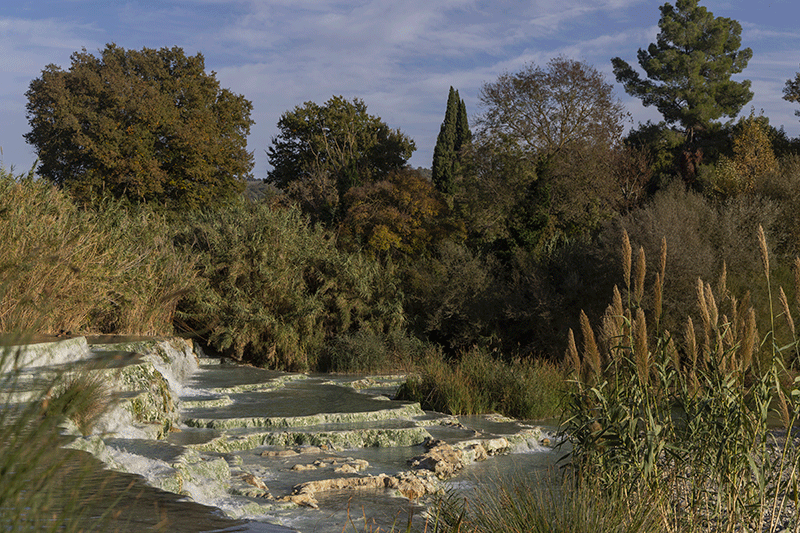 Cascate del Mulino Saturnia
Cascate del Mulino SaturniaCOSTA D'ARGENTO
Orbetello and Monte Argentario
Orbetello's location is very special: it is nestled on the narrow strip of land that juts out towards Monte Argentario, in the middle of the lagoon to which it gives its name. The large Orbetello Lagoon, part WWF Oasis, is a true paradise for birdwatchers. The town of Orbetello is connected to the heart of Monte Argentario, a hilly promontory with the highest peak at Punta Telegrafo. In the municipality of Monte Argentario, near Porto Ercole, we find Forte Stella, the Spanish fortress from 1558 that dominates the coast. Among the places to discover around Ansedonia is the Torre della Tagliata, better known as Torre Puccini. Finally, overlooking the northern slope of Monte Argentario is Porto Santo Stefano, one of the most beautiful seaside promenades in Tuscany.
To discover the most beautiful beaches in Argentario, click here! Here the restaurants where to eat and here the top posts where to have an aperitif!
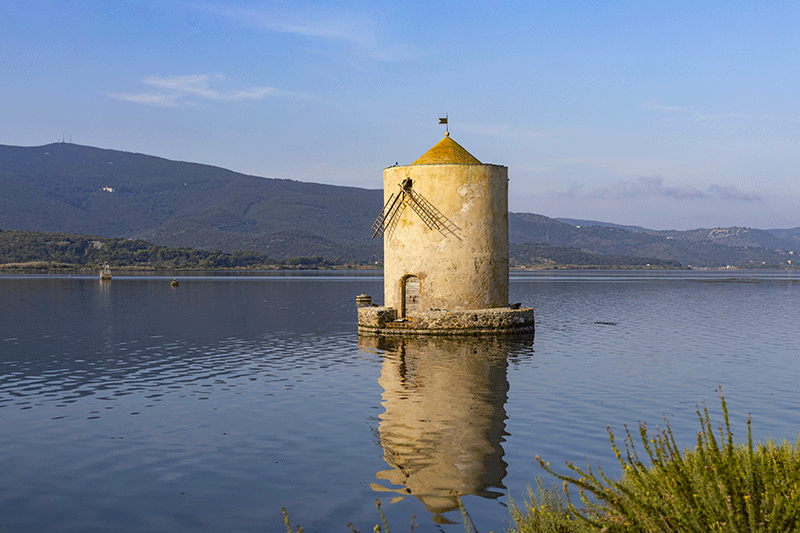 Orbetello
OrbetelloAt the southern end of the Maremma we find Capalbio. In the historical centre, not far from the Rocca Aldobrandesca (a must-see) is a small treasure chest: the church of San Nicola. Definitely the experience not to be missed when visiting the picturesque village is a walk along the patrol walkway of its ancient walls. Between the hills of Capalbio and the sea, a very special art park is hidden: the Tarot Garden, the art park with the famous works created by the French-American artist Niki de Saint Phalle and inspired by Barcelona's Parc Güell, Gaudi's masterpiece. About fifteen kilometres from Capalbio is Lake Burano, a large brackish lagoon almost touching the sea, from which it is separated by a narrow strip of dunes, a nature reserve and WWF Oasis.
For an in-depth look at Capalbio, click here!
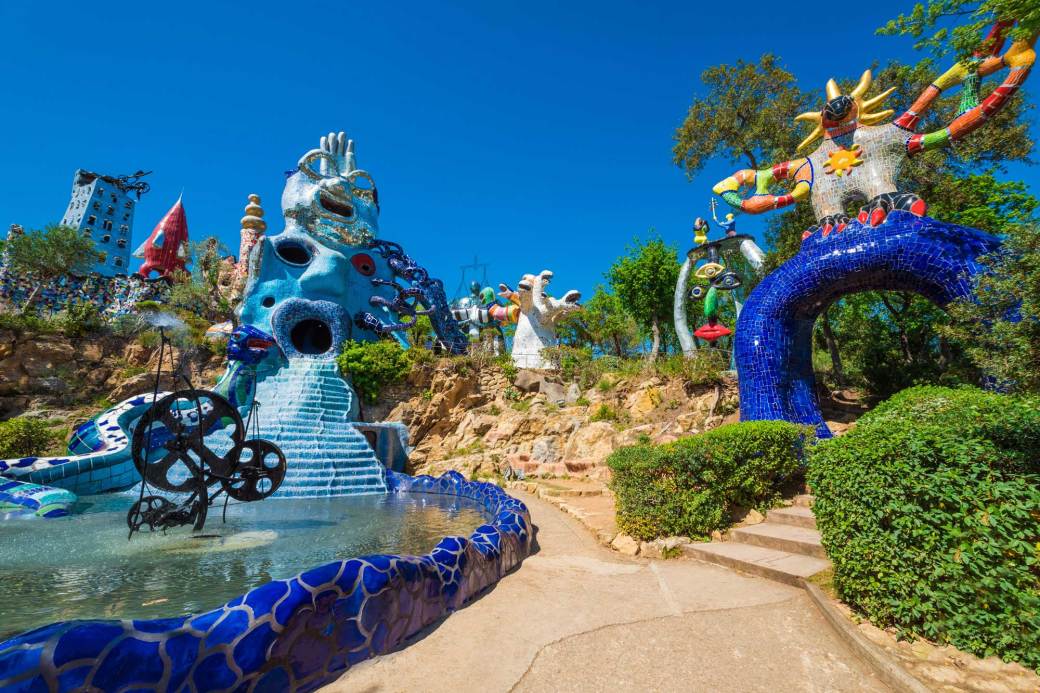 tarot garden
tarot gardenIsola del Giglio
It is the second largest island of the Tuscan Archipelago, and in addition to its beautiful beaches, one can visit the coastal towers, the Rocca Aldobrandesca incorporated along the walls of Giglio Castello, the lively village of Giglio Porto and the Golfo Campese, where one can admire the most beautiful sunset on the island. If you have the opportunity to take a boat trip and visit the island of Giannutri, in addition to the spectacular sea, you cannot miss the remains of a Roman Villa from the 1st century A.D., which stretched over 5 hectares near Cala Maestra.
TUFO
Three gems set in the gentle Fiora hills, renowned for their fascinating architecture. Pitigliano, the town carved out of tuff. The epithet The Little Jerusalem given to Pitigliano comes from the name of its synagogue, due to the large Jewish community that inhabited the village as early as the 16th century. See Palazzo Orsini at the highest point of Pitigliano, the Medici aqueduct and the synagogue. At an altitude of just under 400 metres, Sorano, also called the Matera of Tuscany, rises from the tufa rocks. Worth seeing is the Orsini Fortress, a majestic work of military architecture that dominates the village. There are two gates: Porta di Sopra and Porta dei Merli (or di Sotto), at the foot of the Masso Leopoldino, also known as Rocca Vecchia, an ancient fortified structure of the village. Reachable within a few kilometres from Pitigliano and Sorano, Sovana is a little gem known for its Necropolis and Etruscan quarries and a beautiful Co-cathedral of Saints Peter and Paul.
For an in-depth look at Pitigliano, Sorano and Sovana, click here!
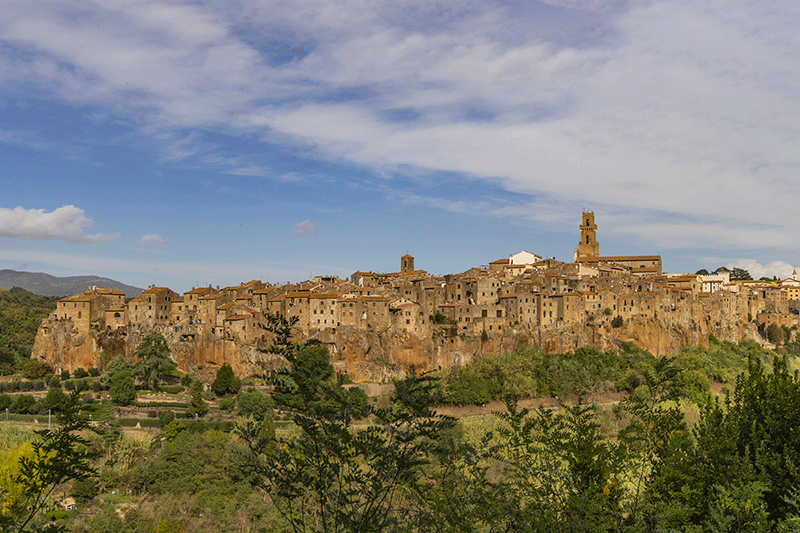 Pitigliano
PitiglianoCOLLINE AMIATINE
Castel del Piano, Arcidosso, Seggiano, Civitella Paganico
Clinging to the top of a hill from which it dominates the surrounding countryside, Castel del Piano offers a beautiful historic centre. The obelisk dedicated to Garibaldi, in the square of the same name, the 16th-century church of the Madonna delle Grazie and the Porta dell'Orologio (clock gate), which stands out among the alleys, nestled between the ancient palazzi, stand out. On the border of the territories of Siena and Grosseto, we find Civitella Paganico (with its not-to-be-missed Badia Ardenghesca), which includes Paganico, Casenovole, Casale di Pari, Civitella Marittima (municipal seat), Dogana, Monte Antico, Pari. In Seggiano, between Monte Amiata and Montalcino, we find the peculiar Giardino di Daniel Spoerri, an art garden by the well-known Swiss-Rumanian artist that, in addition to his installations, also hosts works by other internationally renowned artists such as Dieter Roth, Mauro Staccioli and Erwin Wurm. Finally, Arcidosso, one of the most characteristic villages of the Amiata, is worth a visit, with its churches, works of art and the imposing Rocca Aldobrandesca.
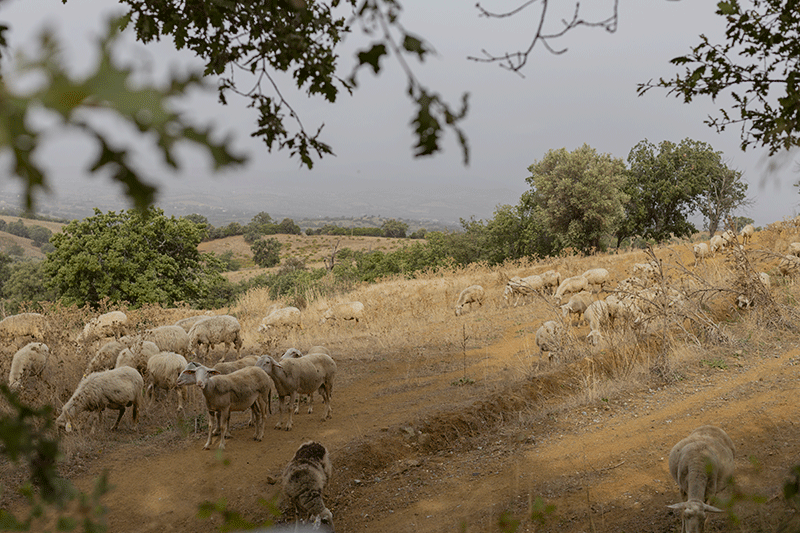 Paganico
PaganicoRoccalbegna, Santa Fiora, Semproniano, Castell’Azzara
Roccalbegna is one of the jewels of Monte Amiata, thanks to the cyclopean boulder that 'looms' over the village and on which rests a bold fortress. Not to be missed is Santa Fiora, with its fishpond built by the Aldobrandeschi and the large spring water basin, overlooked by the side of the small church of the Madonna della Neve. Semproniano, on the other hand, is the 'southern gateway' to Monte Amiata. A picturesque village clustered around the remains of the ancient Aldobrandesque fortress. Finally, a few minutes from Semproniano, perched on a cliff overlooking the Albegna river valleys and surrounded by unspoilt nature, is Rocchette di Fazio.
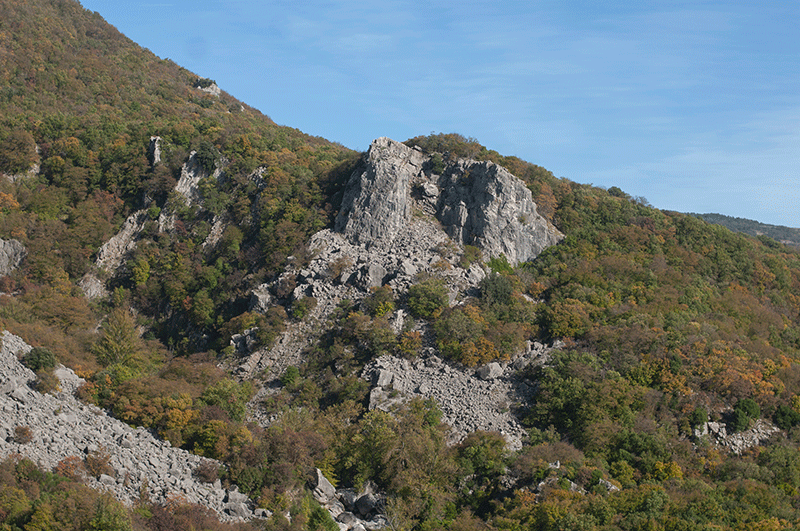 Roccalbegna
Roccalbegna









